Imagine landing on a webpage. It’s sleek. Visuals glide across the screen, captivating, never jarring—effortlessly guiding your gaze. This is no chance encounter. Behind the scenes, it’s the mark of a curated JavaScript slider library painting each pixel of the narrative.
Enter the world of web dynamics, where the right slider library isn’t just a tool—it’s the artist’s brush that turns static images into a symphony of user engagement.
You’re here, which means you’re chasing that seamlessness for your own canvas. And you’ve hit the mark.
Today, we’re diving into an array of slider libraries that make websites pop.
By the end of our article, you’ll be equipped with the savvy to select the perfect library tailored to your project’s needs. Let’s slide through this maze together and discover how these hidden gems can transform the mundane into the extraordinary.
JavaScript Slider Libraries
| JavaScript Slider Library | Responsive | Touch Enabled | Dependency Free | Special Features |
|---|---|---|---|---|
| Slider Revolution | Yes | Yes | No (jQuery) | Full-screen option, deep animation capabilities |
| Flickity | Yes | Yes | No (jQuery) | Cell alignment, group cells for different layouts |
| GlideJS | Yes | Yes | Yes | Lightweight, mount multiple sliders at once |
| TinySlider | Yes | Yes | Yes | Supports mouse drag, no jQuery required |
| bxSlider | Yes | Yes | No (jQuery) | Ticker mode, pager and controls customization |
| SplideJS | Yes | Yes | Yes | Lightweight, multiple slide layouts |
| Slick | Yes | Yes | No (jQuery) | Infinite looping, variable width slides |
| SwiperJS | Yes | Yes | Yes | 3D effects, multiple navigation options |
Slider Revolution
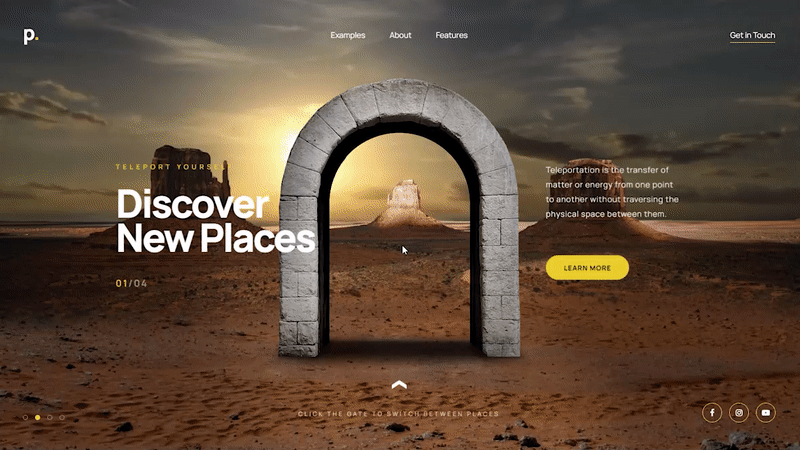
Slider Revolution is your secret weapon to creating responsive WordPress sliders, web pages & stunning visuals even with zero experience.
Exceed even the most unrealistic expectations with special effects, animations, and impressive designs. All at your fingertips in our drag-and-drop intuitive editor.
There are 200+ templates to get you started on your responsive content. These customizable templates are NOT just for WordPress responsive sliders, but also for hero sections, web pages, WooCommerce content, and other content elements.

You’ll be able to create everything a pro can do without writing a line of code.
Once you open your eyes to the immense possibilities our template library offers you, you’ll never have to deal with the limitations of an average WordPress slider plugin ever again.
Did we mention there’s a 2000+ elements library that you can use to turn your raw ideas into stunning visuals?
You’ve got a royalty-free media library at your fingertips all included in this cutting-edge WordPress slider plugin: background images, videos, object PNGs, font icons & SVGs, premade layer groups, and many more.

Slider Revolution is the cutting-edge WordPress plugin for today’s sky-high web design demands. Packed with sleek features, it can turn boring and static designs into visually-grabbing, responsive websites with just a few clicks.
Check it out and see for yourself!
Flickity
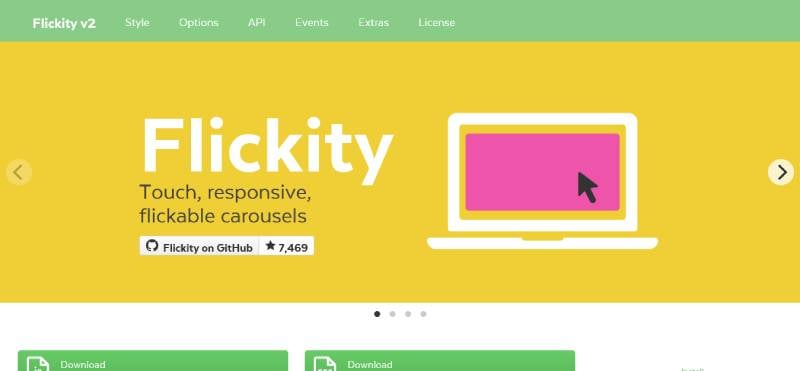
Flickity feels like you’re giving your images a groovy little skateboard to glide across your web pages. It’s all about creating those smooth, flickable galleries that’ll have users wanting to swipe all day. Mobile-friendly sliders? Check. You know that look where everything just snaps into place like magic? That’s the vibe Flickity’s all about—utter slickness.
Best Features:
- Touch-enabled, swipe-friendly fun.
- Works like a charm on mobile devices.
- Picture-perfect alignment with zero effort.
GlideJS

Get this: GlideJS is like that lightweight friend who can sprint without breaking a sweat. It’s all about speed and not jamming the browser with unnecessary fluff—efficiency, you know? Adding this to your site is a smart move for buttery-smooth carousels that just feel snappy and responsive, even on devices that aren’t the latest and greatest.
Best Features:
- Clean design that’s a breeze to work with.
- Keeps things light with its lean script.
- Speedy performance, even on older devices.
TinySlider
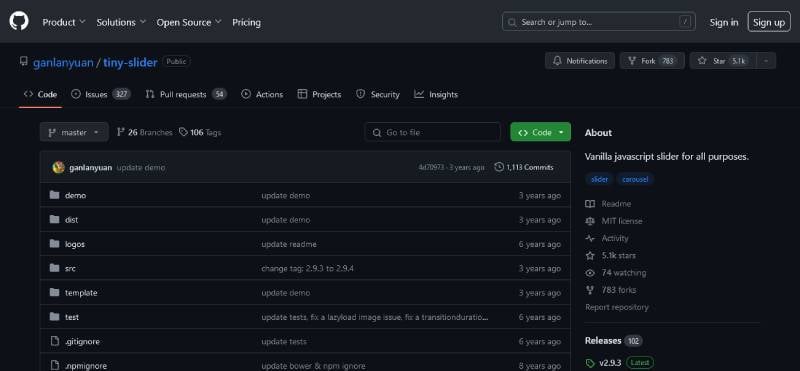
Imagine a slider so flexible, it’s practically doing yoga on your web page. TinySlider is uncluttered and super adaptable. Want a slider that plays nice with any device? You’ve got it. This is your go-to for adding that effortless sliding functionality without calling in for heavyweight libraries.
Best Features:
- No dependencies—run it solo.
- Fully responsive for all devices.
- Accessible and easy to navigate.
bxSlider
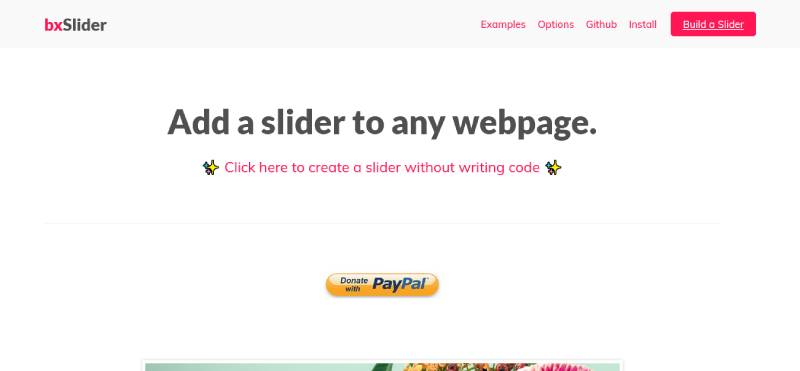
Remember those retro photo slides your grandma had? bxSlider is like the cool, modern update to those. It’s user-friendly, so slap it on a web page, and watch your images slide on by. Got lots of pictures? No problem—bxSlider handles them like a champ with a nifty auto-play feature.
Best Features:
- Simple setup for seamless image galleries.
- Auto-play so the good stuff keeps rolling.
- Thumbs up for built-in thumbnail controls.
SplideJS
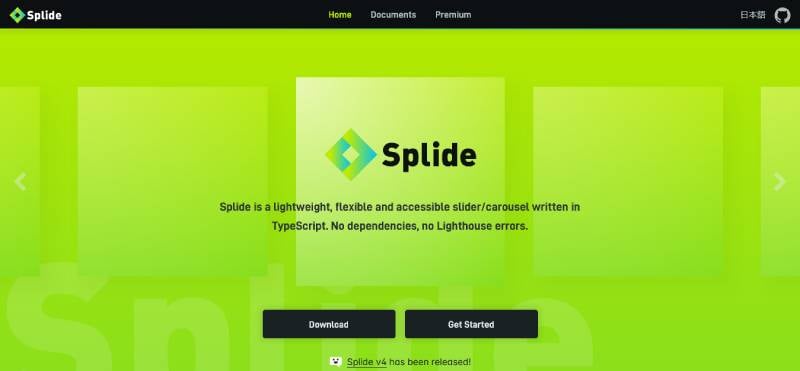
Think of SplideJS as your personal stylist for web content—a slider library that makes everything just pop. It’s not just easy on the eyes; it’s also kind to server resources. Creating those neat, snazzy slide shows or a neatly-aligned carousel? SplideJS has your back, keeping things lightweight and zippy.
Best Features:
- Slick design, with lightweight code.
- No sweat to customize; tweak it as you like.
- Caring for accessibility with keyboard navigation.
Slick
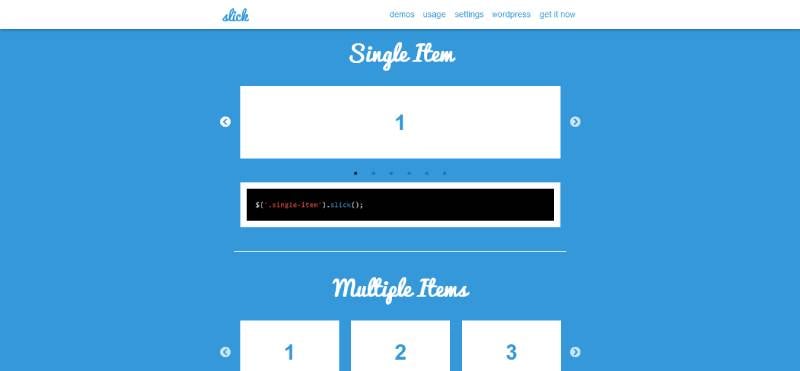
Slick is legit like that friend who’s just so good at organizing things. Right from those infinite loops of images to lazy loading so your site doesn’t choke—it’s got the works. Dive in and you’ll see how it’s a dream for not just desktops, but those little screens in everyone’s pockets, too.
Best Features:
- Infinite looping for never-ending content.
- Respects your load time with lazy loading.
- All eyes on mobile responsiveness.
SwiperJS
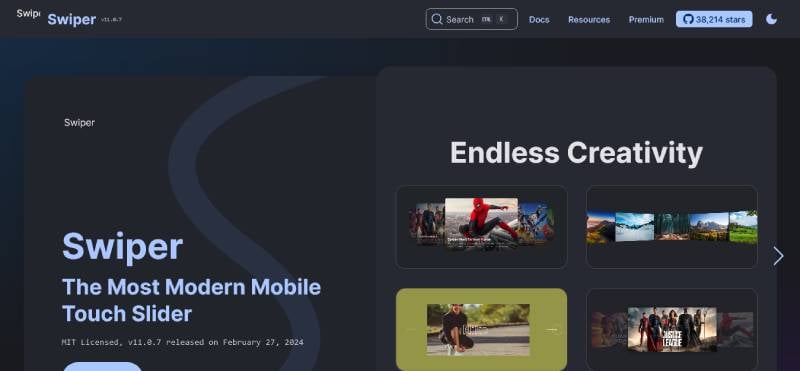
SwiperJS is like the James Bond of slider libraries—sophisticated, versatile, and downright impressive. You want to add some touch swipe action for your images? Done. You’re thinking about mixing it up with vertical slides, multiple rows, or 3D effects? SwiperJS says, “No problem!” It’s the go-to gadget for making your web content wildly interactive.
Best Features:
- Fancy 3D effects to thrill your visitors.
- Get creative with vertical slides and multiple rows.
- Top-notch touch actions for a smooth experience.
FAQ On JavaScript Slider Libraries
What are JavaScript Slider Libraries?
These digital gems are like magic wands for websites. They’re chunks of code, brewing up interactive carousels, gliding images, and swiping galleries.
A slider can be a show-stealer, spotlighting content or images on your web pages with style. In essence, they’re the backbone of those snazzy visual features you love to see on slick sites.
How Do I Choose the Right Slider Library?
Listen to your project’s heartbeat. It’s all about the fit—like a tailored suit. Consider the weight (lightweight scripts for speed), responsiveness (because mobile is king), and features (think touching, swiping, arrows).
Compatibility with browsers and tech stack compatibility (jQuery, Vue.js, React, you name it) are biggies, too.
Are There Any Free Slider Libraries Available?
Absolutely! Freebies rock! You’ll find a treasure trove of open-source heroes like SwiperJS and Glider.js. These guys pack a punch without the price tag, and don’t think for a second that free means cheap on quality.
Always check the license, though—open-source doesn’t always mean ‘do-whatever-you-want’.
Can Slider Libraries be Customized?
You bet! It’s all about making it your own. Tweak the settings, play with the transition effects, maybe throw in some thumbnails. Most libraries come with options to spice things up to your taste—like a chef adding his secret spice to a dish.
Do JavaScript Sliders Impact Website Performance?
They can. Like any feature, if overdone, sliders can slow things down—you wouldn’t want to lug heavy files up a hill, would you? But, choose a lightweight script, optimize images and lazy-load content, and you’re golden.
The aim? A seamless experience. Remember, performance matters for both users and SEO.
Are JavaScript Sliders Mobile-Friendly?
Modern times call for modern sliders, and thanks to the forward march of tech, many sliders are now touch-enabled. They’re attuned to the nuances of mobile devices, making them just as swipeable and responsive as your favorite dating app.
How Do I Add a JavaScript Slider to My Website?
It’s like building Lego—start by choosing your blocks (Slider Revolution, bxSlider, you name it). Most libraries come with clear instructions—link the required files (JS, CSS), add the HTML markup, initialize the library with your preferred settings, and voila! It’s alive!
What’s the Difference Between a Carousel and a Slider?
Carousels are the social butterflies of the content display world—they revel in showing multiple items at once. Sliders? Think of them as the cool, minimalist artists—they prefer one masterpiece at a time with transition effects. Both are attention-grabbers, both are sliders at heart.
Can JavaScript Sliders Display Videos?
Imagine that! And the answer is a resounding yes. Many slider libraries have embraced the multimedia era, supporting video content. So, grab your popcorn, because with the right setup, your website can feature as vibrant a theater as any cinema.
What Should I Consider for Accessibility When Using a Slider Library?
Think about all users—the goal is to ensure everyone enjoys the ride. Use semantic HTML for structure, provide keyboard navigation, include ARIA roles and labels, and don’t forget about controllable autoplay options. Accessibility is not just a good practice; it’s a responsibility.
Conclusion
We’ve sailed through the sea of slider libraries, touching the shores of functionality, style, and interactivity. Each gem we uncovered, from SwiperJS to Slick Carousel, isn’t just a tool; it’s a stepping stone towards an engaging user interface.
To wrap up:
- Sliders can be the spotlight or the subtle touch that says, “Hey, there’s more.”
- Performance and responsiveness don’t have to be sacrificed on the altar of visual appeal.
- Choosing a slider library is like picking the right spice for your dish. It should complement, not overpower.
And hey, the journey doesn’t end here. Exploring examples of JavaScript slider libraries is just the beginning. Unleashing their potential on your digital canvas? That’s your adventure. It’s mixing the right combinations, testing the waters, and seeing just how much life these tools can breathe into your work. The web’s your stage—let your sliders dance.
If you liked this article about JavaScript Slider Libraries, you should check out these articles also:
- Amazing App Landing Page Template Examples (42 Websites)
- The Best Simple and Efficient Minimalist Websites (104 Designs)
- Testimonial Carousel Examples from Existing Websites

